On a sunny afternoon in April, I sat down with local Twin Cities artist Elliott Sharpe to talk about his artwork. To my delight, he drew in his sketchbook throughout our conversation. You can follow Elliott on Instagram.
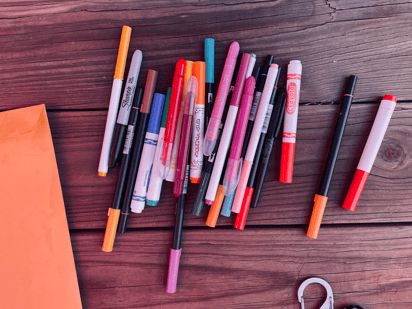
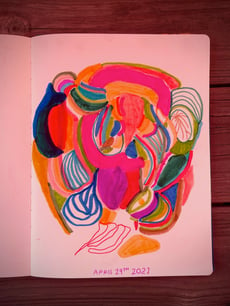
Let's start at the beginning: how did you come to art making?
I started out through songwriting, I was a songwriter for a number of years. I wrote very short 2-3 minute anti-folk songs about varying topics, heavily drawing inspiration from my disjointed Evangelical Christian past. I knew my songs were not like the songs I enjoyed listening to, but they were still songs, and people wanted to hear them.
I met someone who encouraged me to write songs, and she helped me tour around the midwest. We would play for about five people in living rooms, every couple of states. It was really fun, being out on the road.
During that time, I was making my own CDs to sell on the road. I found myself enjoying that process more than I enjoyed the process of writing songs. That is what first sparked my interest in art-making.
My philosophy for songwriting was very open-minded about what a song could be: I was like, wait if I think that this can be a song then why can't this be art? So that kind of opened my eyes to decoding my art in a different way and allowing myself to be experimental because for a long time I wasn't. I was like “I have to make art that looks like this.” I was very rigid in my idea of art. But it was through my deconstructing of songwriting that I constructed art. Songwriting was my foot in the door.
That description helps me articulate something that I like about the color palettes and compositions of your work. And it also makes me curious about who your inspirations are, whether in music or in art. I’m thinking of Wassily Kandinsky and other 20th-century artists who would create explicitly musical artwork, so I think you could describe your work as “lyrical.”
Yeah, that’s a direction I'm intentionally headed now. For a long time, I was just making stuff because I found out that I had that power. It takes a long time—I find that lots of people make art but they're not “artists,” which is interesting to me because I always challenge that. Like, are you? I think you are! We like to keep art as like a sacred thing that only certain people have access to or certain powers, you know, but it's more accessible than people know. That's another thing that I try to do with my art […] is inspire others to create as well 'cause it's not that hard. Although, you know it's easy to say that!
A lot of people won't think to start [making art] unless they are invited and they're waiting to be invited. And it's like, no one’s going to invite you, I hate to say it! Just show up! I think that was what was holding me up for so many years too. I was waiting to be invited. It's tough, but you just have to start doing it.
If I could go back to the music making thing: when you were making the CDs, what kind of medium were you working in?
I was mostly just doing sharpies 'cause I was on the road. I had this kit of CDs and my laptop that I was burning the CDs on. It was very underground. That was the scene that I came from –although I was playing ukulele and everyone else was doing punk rock. So that was fun. […] I haven't picked up a ukulele in years—[maybe] about a year ago. It’s funny how things can be your purpose in life and then they can transform. I wouldn't say that I’m not songwriting anymore, it's just I'm not making music.
So, sharpies?
Just sharpies and printer paper. […] Then I would make a little art; I would have some markers and maybe would color it in. And people were really happy with them. I don't know if they were buying my CDs 'cause they wanted me not starve… you know, you see a bunch of 18-year-olds on the road and are like should I be paying you so you don't die or anything?! So, I think there was a little bit of both: you know, like I really really don't want you to die and also your art is kind of cool.
I was thinking about Daniel Johnston as you were talking, because his album covers are such an art form.
Yeah, they’re iconic—almost removed from him, like the “hi how are you” T-shirt. […] He’s a big inspiration too because of how he was able to figure out a way to make his art and music exist side by side really well. You can’t actually separate the art from the music. I like that about his body of work. […] Whenever I see that [kind of multimedia] in the world I’m really excited by it—like Kimya Dawson and Jeffrey Lewis, who also do that. I guess they all live in the same genre of anti-folk and carry the tradition of folk music with them. […]
You mentioned that you started making art more intentionally in the last couple of years. Could you describe what that development or process was like and what your practice now looks like?
To go along with the music piece, I see my art almost like folk songs. I like the thing about folk music where they’re stating big ideas that live on the universal consciousness but telling them from their own perspective, which I really like. It’s not personal, but it is personal, you know? I love the way that folk music is able to do that. It’s able to transcend your own life into the rest of society. I’ve really thought about that – individualizing universal experiences. That’s what I want to do: individualize a universal experience as much as possible. That was one of the first things that I got really excited about when I started making art was that people were relating to things that I thought were only exclusive to my brain. Wait you think this too? of course, we’re all getting energy from the same place so of course we relate! Seeing people responding to my art […] made me realize that is bigger than what is in front of me. I’m talking about really, really big ideas and I got a little bit more confident in that and I started thinking back to songwriting and I was like, “oh! songs, art, I can do that here… poetry!” and then I put them all here [gesturing to his sketchbook].
So that brings us to what your images actually look like, which is that you incorporate text into them a lot. They’re so strong in color and composition and as we already said, they have this lyrical quality about that—and I meant that on a visual level—like the image you’re doing right now. Could you say more about the role of text? I’m thinking of that great image you have about the dentist which I love…!
“I have a lot of teeth and I don’t go to the dentist!” There’s a stream of consciousness that comes through in my art – […] it’s one way of accessing the universal knowledge by writing what’s on your mind, because if it’s on your mind it’s probably on someone else’s mind because it’s all coming from the same place. That’s definitely a big element of it. I think that stream of consciousness is […] what inspired me to be bolder about the words that I put down. I think they started from a place where I was like “I really want to write something on down on this piece of paper but I was like should I? wouldn’t that ruin it? so then that’s when I started using acrylic so I could like skate over it because acrylic paint is more opaque so it won’t bleed through the image. […] So the process for that is that I would do something like this [gesturing to the sketchbook] like weeks ago and then I would visit it again weeks later and think about what that image made me feel like and I’ll write the thing on it. So the one about the dentist I made months after the piece was done. I was like, I should go to the dentist right now, so I’m going to write this on this piece of paper. This is fine. This is profound. This feels good.
Yeah, that’s universal and relatable!
Yeah, everyone’s avoiding the dentist!
A lot of your images you’re making in your sketchbook, so it has that kind of personal feel. I’m curious about how you think that relates to the scale of your work, like the physical size and that kind of intimacy and what size the sketchbook is dictates the size of the work. and it’s a thing you can carry around and do anywhere, like right now. How are you thinking about scale in your work if at all?
Scale is something I’ve considered a lot. It’s how many people can see it at a time, is something you think about when you think of scale. like this, maybe like five people can look at this comfortably. This is not for sharing really, which is why Instagram kind of helps with that. because I’m able to take something that’s this big and it’s still only this big but ten people are looking at it instead of the five that are physically constrained to viewing this at a time. So, I think about Instagram a lot honestly when I make sketchbooks. I feel very comfortable with the size, with posting it online, so it’s really conducive with that. It’s really funny when I try to put my work in galleries, because […] most of my work is like 5”x8”. I did a gallery show of all of them once, and it was so funny because I was like these make great Instagram posts but they look really funny right now! […] I’ve been challenged by a lot of people to make really big things but then I’m like that feels like a little bit more pressure. Because in a personal sketchbook it’s like this big, I’m not wasting that many materials, and it’s very cost effective, too.
What do you think the role of spirituality, religion, or ritual, plays in your work—or any other words in that orbit of meaning in your current or past practice?
Spirituality definitely does influence a lot. […] I grew up non-religious, but my mom grew up Catholic. My dad grew up Catholic too, but just like Catholic in the sense of guilt but not religion. So they both were weighed down by a couple of bricks my entire life. My mom wanted to start going to a less oppressive church […], she wanted to go to an evangelical church, […] which is really, really funny looking back and now talking about this out loud. Like really? Wow. I’ve never said that out loud. She thought it was more open because they weren’t doing rituals every day. […] I don’t think I paid enough attention because it didn’t really-- I don’t’ see any of the stuff that people talk about evangelicals now really happening. Like I didn’t see that they were particularly hateful towards queer people. […] So I went there for a long time. […But] We never really felt like we were at home there, which was interesting, because the way that their community functioned didn’t really allow for people that had other ideas. And I always had creative ideas to add onto these bible discussions and that wasn’t really welcomed there. New interpretations of the Bible were a no-no and I had so many different ideas and so […] I left that church feeling a little kicked. I feel like there’s a lot of material in the Bible and you can really think about it in so many different ways and that wasn’t really accepted. So I left and I was like, well, maybe I don’t really need to be a Christian anymore. I can just be and do whatever I want.
As an adult, I started going back to church at a Unitarian church because I lived down the street from one. […] I didn’t realize that theology lived in so many places until I became Unitarian. Now I’m not practicing Unitarianism, but I’m also living by their principles every day, so I think I’m more like a spiritual Unitarian Universalist, more so than a practicing one. But I guess I am practicing in a way…?
Yeah, like, what does it mean to practice?
Right.
So it sounds like you’re informed by some of these things.
Yeah and that appears in my work. That’s why there’s some weird things where I’m talking about some shady things in Christianity in my art, like in the repent piece, things like that where images and words come back up, like regurgitated over time and my brain processes them and I recover from the trauma that the church gave me.
The meditative thing that art does, where you can zone out and just enjoy the process. It maybe sounds cliché but it’s real that art is healing.
Oh yeah, it is!
The making of it and the sharing of it. Which is another thing that I appreciate about your work.
So spirituality is here and also is not here. Something else that’s interesting is the way that people approach me on Instagram – they’ll say “wow, I really needed this today” and things like that which kind of reminds me of things you might feel after you hear a sermon or something. People are engaging with it like it’s a religious thing and they talk to me like I’m a bigger than life person, but I’m like I’m just a guy! People talk to me all the time, you don’t need to treat me like I’m untouchable. Which is interesting: the way that social media does that to people, they think people are successful because they’ve hit different metrics or whatever. I don’t know about that. We’re all just approachable people. […] I’m still trying to think of how to answer your question about my current practice. Recently I’ve been doing more commercial things with my art to survive.
Like the tote bag on your website?
Yeah, and partnering with brands. I can’t talk about brand specifics [right now]– but a brand will feature me in the future. [A month after this interview Anthropologie issued three new items made from cloth featuring Elliott’s art!] I also want to go in the direction of making more album art too. As far as how often I make art, it’s whenever I have markers, so everyday pretty much! I’m always making art, whether or not I want to show anyone what I’ve made. For a while I was using Instagram as my only reason to make art, [ …] and that didn’t feel sincere so then after a while I reverted back to where I was before and it’s almost the opposite now where I don’t want to post anything anymore. This is all for me!
It’s nice that you enjoy it! It’s like what we were talking about at the beginning, the personal and the universal. if it’s something that you take pleasure in then it will probably will resonate with somebody else.
Right, if it brings you happiness then it probably brings somebody else happiness too.
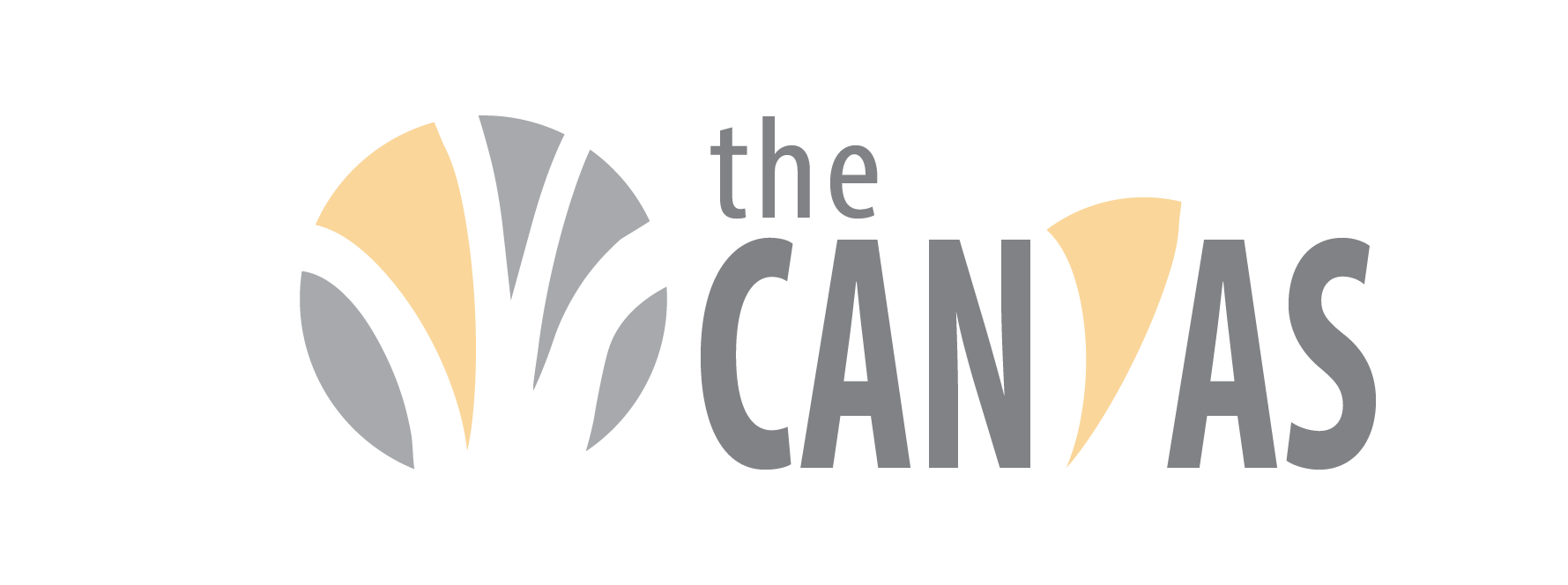


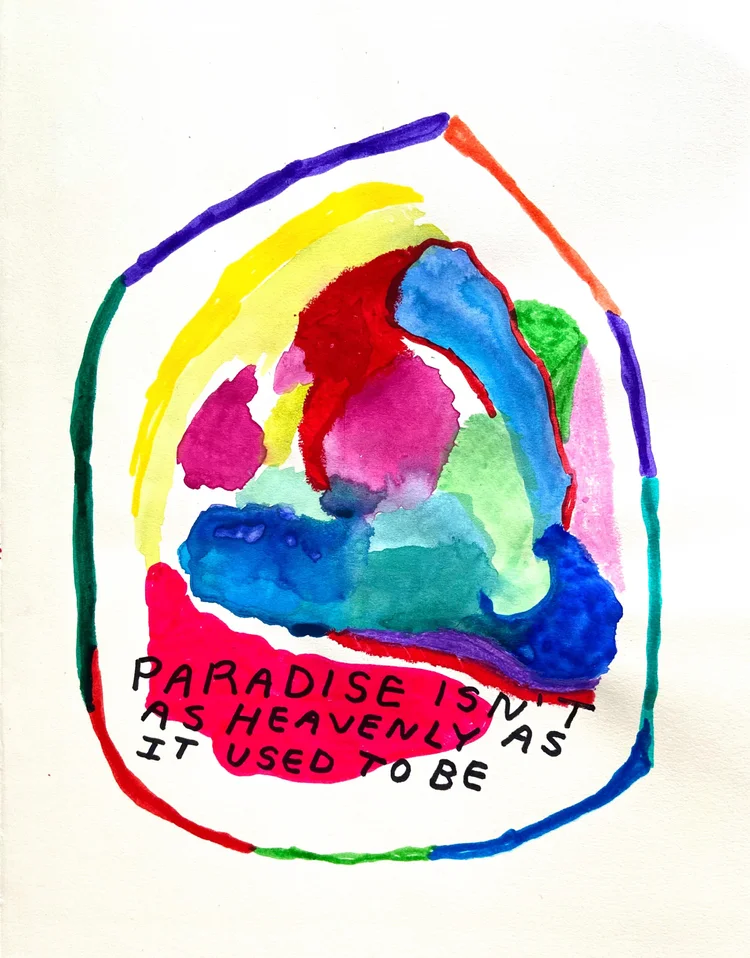

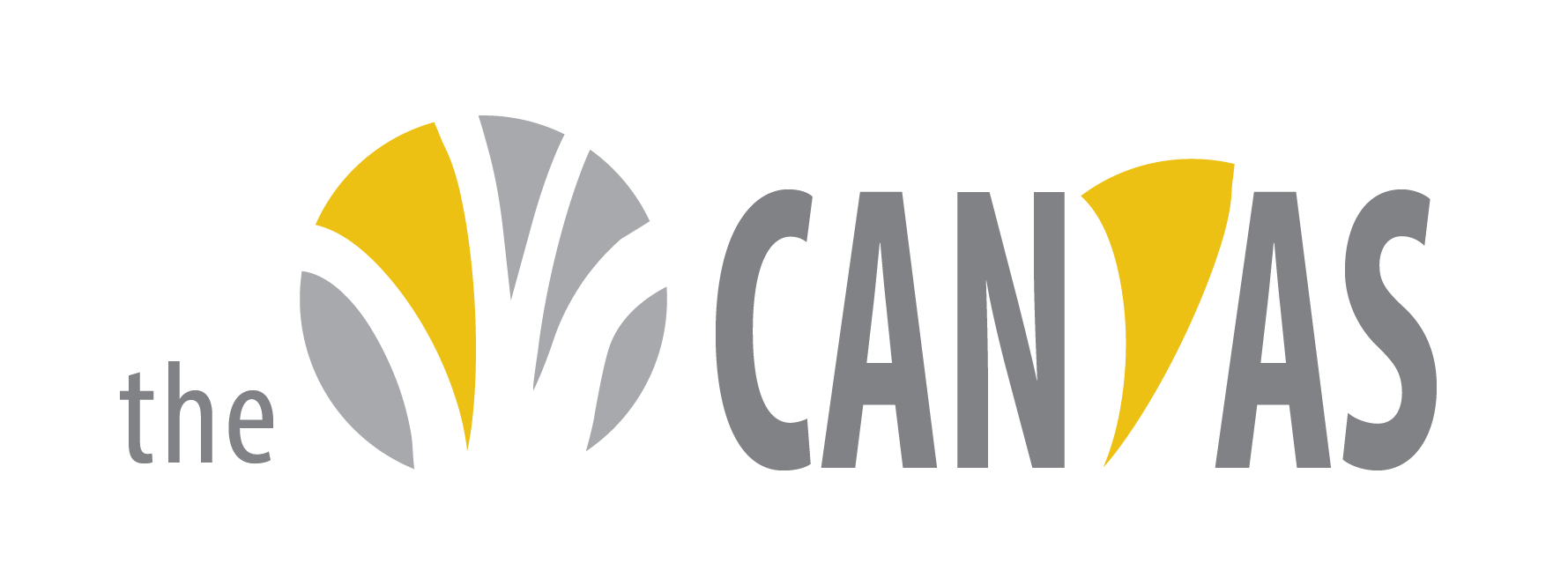
Your Comments :